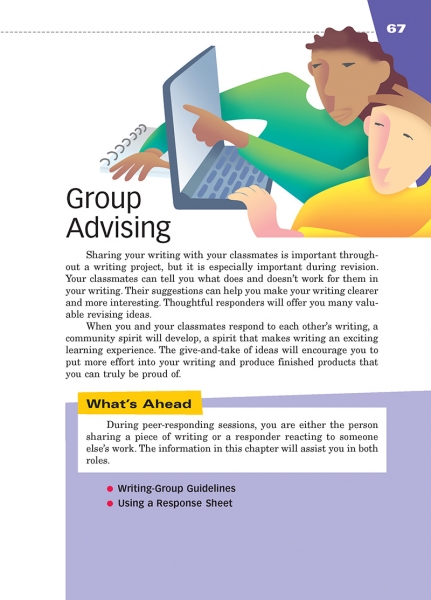Page 067 from

Start-Up Activity
Ask your class, "When you text a friend of yours, what do you hope happens next?" They will probably say, "I hope my friend replies." Of course! When students write in social media, they are looking for a response from their readers. Why, then, is academic writing so often taught as if no one (except the teacher) will ever read the words?
That's one reason group advising and peer responding are important. Writing is communication. It's not simply producing a document, but rather creating a connection between writer and reader. Group advising gives students an immediate, genuine audience. It also gives them feedback in real time from real readers. This feedback can really help students revise with their readers in mind. Finally, it helps to create a community of writers in your classroom—just as Instagram and Snapchat create communities of writers online.
Think About It
“Good writing is supposed to evoke sensation in the reader—not the fact that it is raining, but the feeling of being rained upon.”
—E. L. Doctorow

Start-Up Activity
Ask your class, "When you text a friend of yours, what do you hope happens next?" They will probably say, "I hope my friend replies." Of course! When students write in social media, they are looking for a response from their readers. Why, then, is academic writing so often taught as if no one (except the teacher) will ever read the words?
That's one reason group advising and peer responding are important. Writing is communication. It's not simply producing a document, but rather creating a connection between writer and reader. Group advising gives students an immediate, genuine audience. It also gives them feedback in real time from real readers. This feedback can really help students revise with their readers in mind. Finally, it helps to create a community of writers in your classroom—just as Instagram and Snapchat create communities of writers online.
Think About It
“Good writing is supposed to evoke sensation in the reader—not the fact that it is raining, but the feeling of being rained upon.”
—E. L. Doctorow